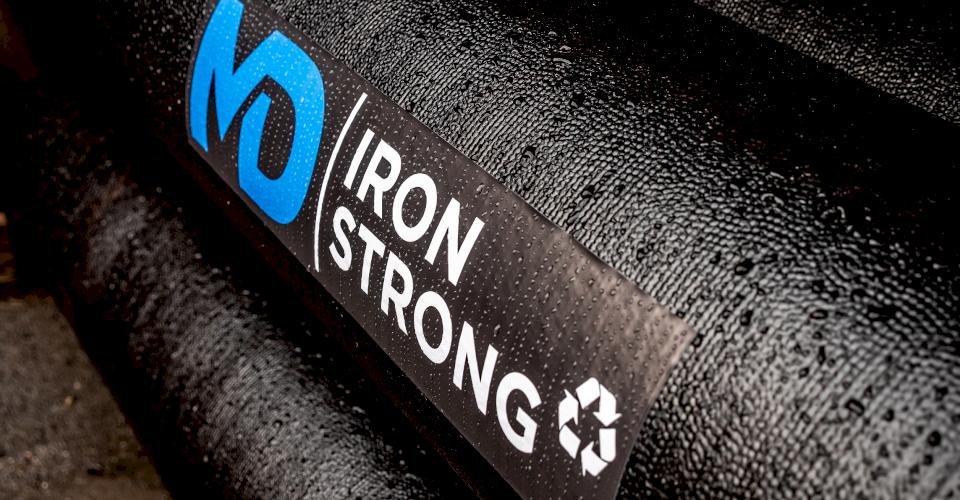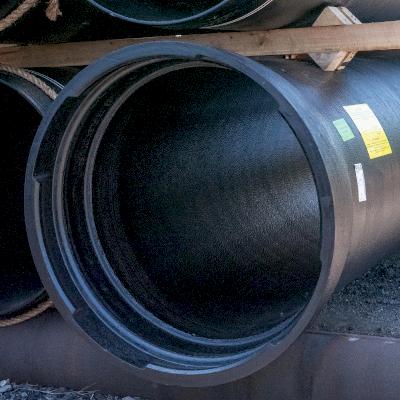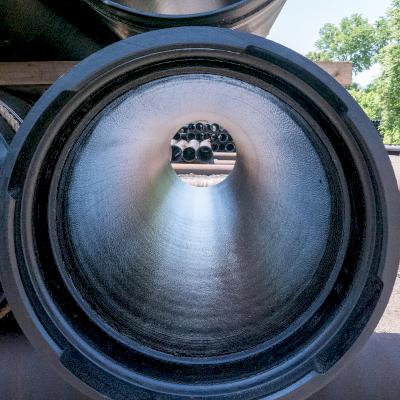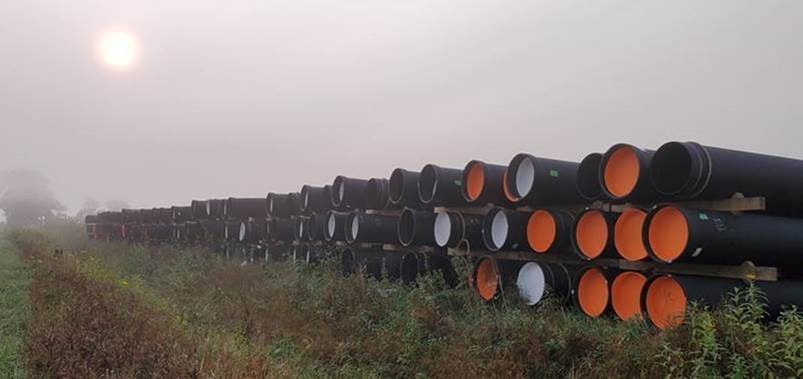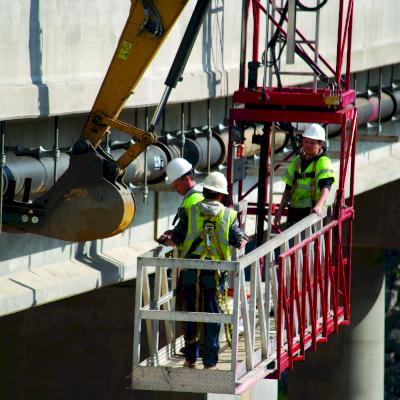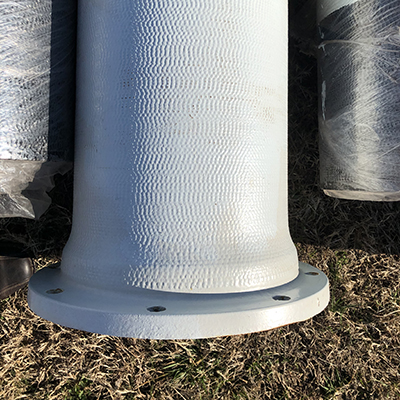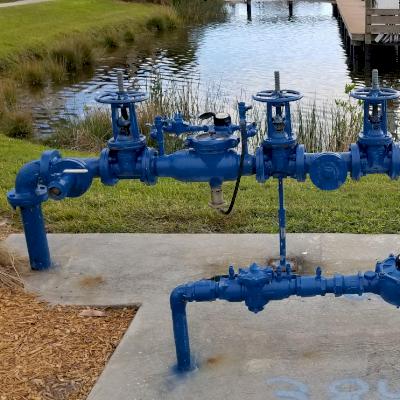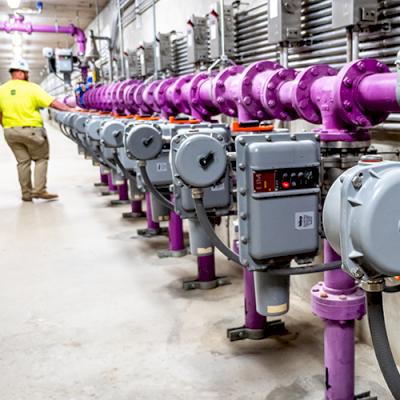A question that comes up occasionally is, "Can I paint over the seal coat on Ductile iron pipe?" Perhaps the more pertinent question is, "Should I paint over the outside shop coat?" But before we answer either of those questions, we should ask for what purpose the user wants to paint over the seal coat in the first place. Is it for cosmetic purposes? Would it be intended as an identifying mark on the pipe? Or do they have some other purpose for changing or adding to the otherwise standard black asphaltic coating that the manufacturer typically provides?
What is the Purpose of the Seal Coat?
Before we answer the question about painting over the seal coat, let us look at why it is on the pipe, to begin with. Bituminous {bīˈt(y)o͞omənəs} Asphaltic Coating, maybe the most mispronounced and misspelled word in the Ductile iron industry. We see it referenced in many project specifications, as well as within the ANSI/AWWA C151/A21.51 Standard for Ductile Iron Pipe, Centrifugally Cast, For Water.
As discussed in my colleague Aaron Loosli’s blog, What is the Purpose of Seal Coat on Ductile Iron Pipe?, the seal coat on the outside serves no functional purpose other than providing a consistent look and color to the exterior of the pipe.
Beginning in October 2003, McWane Ductile made a conscious decision to use an environmentally-friendly water-based seal coat in place of a solvent-based coating. This water-based seal coat eliminates the volatile organic compounds (VOCs) emitted during the application process.
Additionally, unlike the prior solvent-based seal coats, water-based asphaltic paint requires no solvent-based cleaning solutions in the foundry, a tremendous plus for all the workers.
While this water-based paint makes the pipe more aesthetically pleasing prior to installation, it serves no other sustainable purpose - it offers no corrosion protection. Conversely, missing or thin areas of the seal coat do not jeopardize the pipe's long-term integrity and serviceability.
Should the Seal Coat be Re-applied in the Field?
Before shipping pipe to a job site, the pipe is loaded, bundled, and subsequently strapped down. During transport, the pipe may rub against each other or the supportive timbers causing the removal of some factory coating resulting in an uneven appearance.
Some municipalities or inspectors have been concerned with this appearance and may ask that these areas be “repaired” before installation by applying more paint. While this certainly can be done, it, in fact, is not necessary.
Again, the external asphaltic coating, applied at approximately a 1 mil thickness, offers no real “protection” for the pipe. Should a municipality or engineer have corrosion concerns, McWane Ductile suggests referring to the Design Decision Model (DDM®) to determine if the project requires V-Bio® Enhanced Polyethylene Encasement or an additional Metalized Zinc Coating. For more details on using the DDM, V-Bio, and Zinc Coating see this Iron Strong Blog by my colleague, John Johnson.
Are There Other Applications Where the Delivered Pipe May Need to be Painted?
With certain projects, there may be a requirement in the specifications for additional paint or coating to be applied. In buried applications, this may include using colored paint to mark the pipe according to its intended service, for example:
- Blue for potable water
- Green for sewer service
- Purple for reclaimed/re-used water used for irrigation purposes
This color-coding is quite often achieved very easily at the job site just before, or immediately after, the pipe is installed by simply applying the proper colored stripe(s) to the pipe.
For exposed piping, such as bridge crossings, aerial installations, or plant process piping, McWane Ductile would not typically advise painting over the shop applied asphaltic coating. Painting over the seal coat could result in a less than desirable finished product as the seal coat may bleed through, or the new paint may not adhere as well as intended.
In these instances, it is better to deliver pipe with a specialty primer coat applied, and then a “finished coat” can be applied later by others.
Typically finished coatings (for exposed piping) are not provided by McWane due to the risk of handling or transportation damage that may occur. As noted above, the color may depend on the fluid service, or it could be a specific requirement, or paint, as stipulated by a municipality. This specification could come down to simply providing a finished, exposed piping system that blends more cohesively with its environment.
Regardless of the color or need for any paint that may be applied post-delivery, the end-user should always ensure that the paint meets any local requirements as well as the requirements of NSF 61 Drinking Water System Components – Health Effects and NSF 372 Drinking Water System Components – Lead Content if there is any concern that it may come in contact with the potable water supply. For more info on NSF certifications, please see the Iron Strong Blog by Dan Henrie, Got Certification? Fabricated Ductile Iron Pipe and NSF/ANSI 61.
Summary:
Everything considered, unless there is a specific project requirement that calls for the Ductile iron to be painted a color other than standard black, there is no reason to fuss with field touch-up of the asphaltic coating.
Should the end-user decide to move forward with painting, they should make sure that any product used meets the manufacturer's specifications for NSF compliance and any other regulatory requirements specific to the region or project.
If you have any questions about "painting Ductile iron" or anything else related to Ductile iron pipe, please don't hesitate to reach out to your local McWane Ductile sales rep. From design to installation, we take great pride in providing education and assistance to water professionals throughout the water and wastewater industry.
Check Out All Our Digital Offerings
References:
- Ductile Iron Pipe Research Association - https://www.dipra.org/ductile-iron-pipe-resources/technical-publications/features?download=7:linings-available-for-ductile-iron-pipe
- American Water Works Association - ANSI/AWWA C151/A21.51 (latest revision), Ductile-Iron Pipe, Centrifugally Cast, For Water


